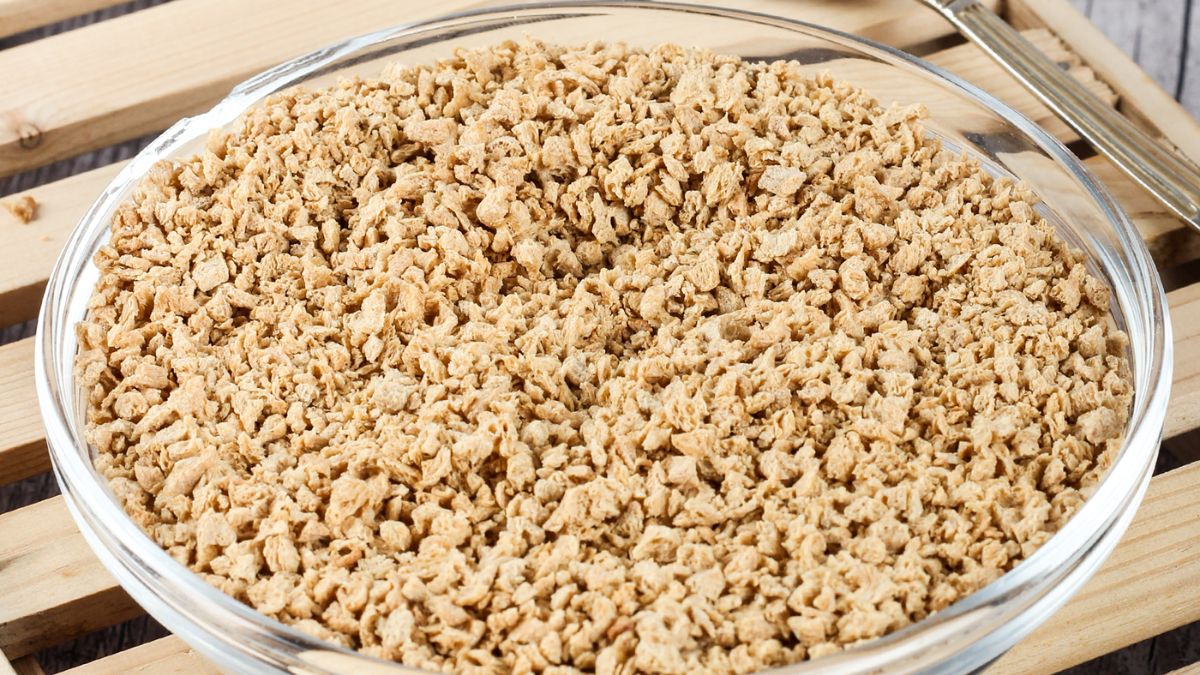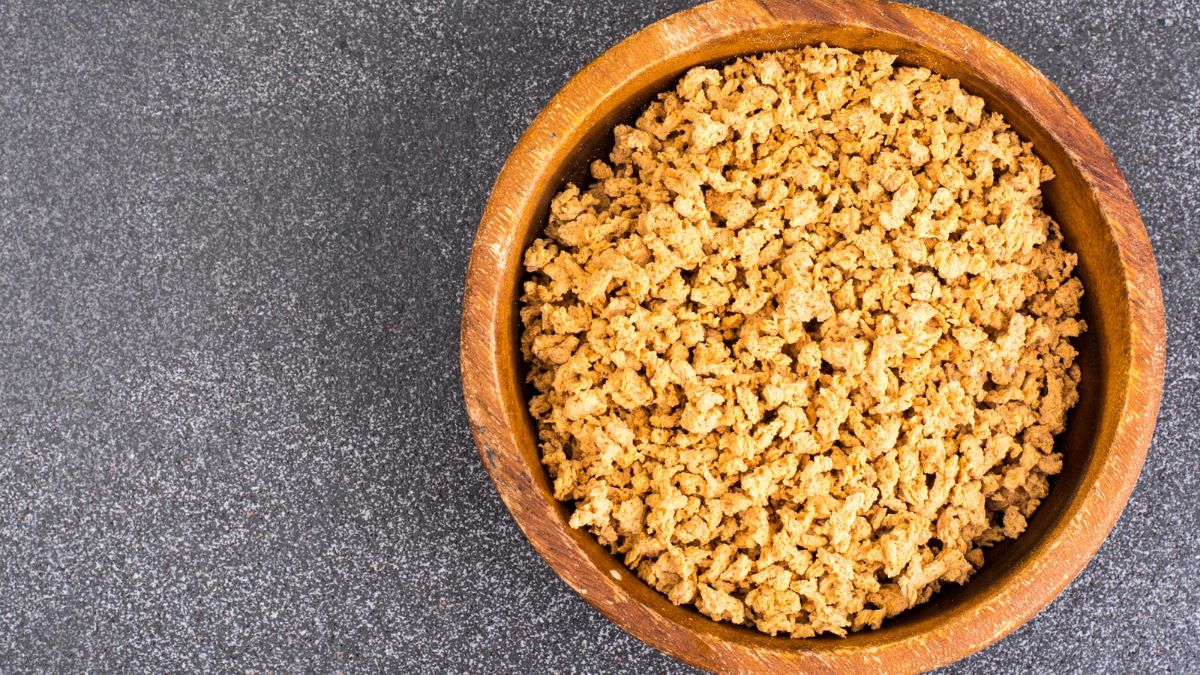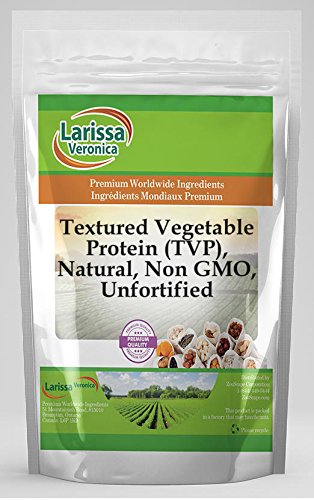Textured vegetable protein, or TVP, is often used as a meat replacement in vegetarian dishes.
Textured Vegetable Protein, or TVP, is often called soy meat, soy chunks, granules, or soy slices. It is made from defatted soy flour pressed into different shapes, like granules, flakes, chunks, slices, strips, nuggets, etc.
Textured Vegetable Protein Nutrition Facts
Here’s a table for the nutrition facts of Textured Vegetable Protein (TVP) per 1 cup (approximately 93g) serving:
| Nutrient | Amount |
| Calories | 322 |
| Total Fat | 1.2 g |
| Saturated Fat | 0.2 g |
| Trans Fat | 0 g |
| Cholesterol | 0 mg |
| Sodium | 12 mg |
| Total Carbohydrate | 24 g |
| Dietary Fiber | 15 g |
| Sugars | 3 g |
| Protein | 53 g |
| Vitamin D | 0 mcg |
| Calcium | 340 mg |
| Iron | 9.7 mg |
| Potassium | 1068 mg |
It’s worth noting that TVP is not a complete protein, as it lacks some of the essential amino acids found in animal-based proteins.
What is TVP?
According to the Food and Agriculture Association of the United Nations, “texturized” means that the soy protein has been changed to taste and feel like meat. TVP is made from soy flour that has been stripped of its fat, which is a byproduct of making soybean oil.
TVP is a meat substitute made from soy flour. It is high in protein and fiber and has no cholesterol or fat. TVP comes in various sizes and flavors, from big chunks to small flakes.
- wheat
- oats
- cottonseed
Is Textured Vegetable Protein (TVP) Healthy?
TVP is something that comes from soybeans, and it is often added to dishes to improve their texture and nutrition.
TVP Benefits
1. It has Important Vitamins and Minerals
TVP has a lot of copper, magnesium, folate, and thiamin. According to the National Institutes of Health, you’ll get 135% of your daily value (DV) of copper. Your body needs copper to make energy and process iron. The NIH says that you’ll get 23% of your DV for folate, which is important for the health of your brain and nervous system. The NIH says that one serving of TVP gives you 18% of your DV for thiamin, which the body uses to make energy for cells.
Magnesium is a trace mineral that helps muscles and nerves work.
2. It’s High in Fiber
TVP is a good source of carbs; one serving has 9 grams of carbs in total. Carbs break down into energy for the body, and the U.S. National Library of Medicine says that this nutrient is important for the health of your brain, muscles, and kidneys.
The USDA Dietary Guidelines for Americans 2020–2025 say that 45–65% of your daily calories should come from carbohydrates.
3. It’s High in Protein
TVP has 13 grams of protein, 26% of your daily value (DV). The Harvard T.H. Chan School of Public Health says that your muscles, skin, and almost every other organ and tissue in your body need protein to work. The USDA says
4. It’s Associated with a Lower Disease Risk
People often wonder if eating TVP can help keep them from getting cancer or other diseases. Soy protein is what TVP is made of and has been linked to a lower risk of breast cancer.
Can TVP be Bad for you?
According to the Mayo Clinic, soy allergies are common and may cause:
- Tingling in the mouth
- Hives, itching, or scaly skin (eczema)
- Swelling of the lips, face, tongue, throat, or other body parts
- Wheezing, a runny nose, or difficulty breathing
- Abdominal pain, diarrhea, nausea, or vomiting
- Skin redness (flushing)
- In severe cases, anaphylaxis
Textured Vegetable Protein (TVP)
How to Cook Textured Vegetable Protein?
Storage Tip
How to Use TVP?
To prepare it, simply:
- Boil 1 cup of water or broth and
- Combine your boiled liquid with 1 cup of dry TVP.
A cup of dry TVP should yield 2 cups of meat substitute. You can add TVP to recipes like:
- Tacos
- Pasta sauces
- Burger patties
- Chilli
- Egg scrambles
- Meatballs
What are the Disadvantages of TVP?
Low Cost and Long Shelf Life
Vegetarian-Friendly Choice
Bland Flavor
Potential Allergic Reaction
Conclusion
Most natural food stores and community co-ops have a section for bulk foods where you can find TVP.
TVP is something that comes from soybeans, and it is often added to dishes to improve their texture and nutrition.



